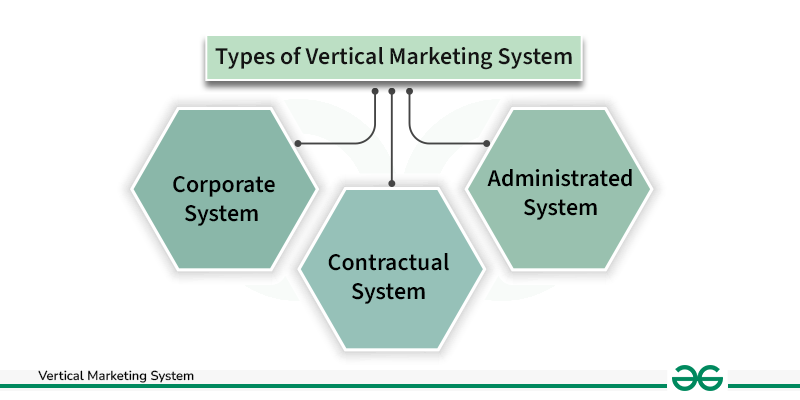Vertical Marketing System | Types, Benefits and Drawbacks
Last Updated :
27 Mar, 2024
Every product and service needs a proper path to reach customers from producers. Mainly, intermediaries help the product reach the customers. As more and more entities get introduced in the distribution channel, there arises a need to have a proper plan which needs to be followed. Vertical Marketing System is an important marketing strategy that involves the collaboration of all the entities of the distribution channel to focus on the efficiency of the distribution channel along with economies of scale.
What is Vertical Marketing System?
Vertical Marketing System (VMS) is a collaboration between various distribution channel levels (manufacturers, wholesalers, retailers, etc.) that focuses on providing customers with goods and services. Vertical Marketing System focuses on increasing efficiency and economies to scale. In a vertical marketing system, producers have to rely on intermediaries to make their products and services available to customers. Although a vertical marketing system allows all the intermediaries to have some control over the distribution process, it can lead to conflicts. For example, Zara holds all of its stores and makes all the stores follow the same marketing strategy. Conflicts between channels get removed because there is an effective integration of all the activities.
Key takeaways from Vertical Marketing System:
- It is a collaborative marketing strategy to ensure economies of scale, improvement of profits, smooth operations, etc. but also, includes some risk factors and can lead to conflict of interest.
- There are various types of vertical marketing systems like Corporate VMS, Administrated VMS, and Contractual VMS.
- Vertical Marketing System involves inputs from all the intermediaries of the distribution channel.

Types of Vertical Marketing System
There are three types of Vertical Marketing System, namely, Corporate System, Contractual System, and Administered System.
1. Corporate System: A corporate vertical marketing system watches the overall distribution process, starting from manufacturers and ending with customers. This vertical marketing system prevails and is suitable in the retail sector. In this, only one company is responsible for the whole production and distribution process. All the activities, including production, packaging, marketing, branding, etc., reside with one single company only. Simply put, Corporate VMS System involves a single entity/member that owns and operates multiple levels of production and distribution.
2. Contractual System: A contractual system is an agreement between various intermediaries of the distribution chain. Under this system, an agreement stating the roles and responsibilities of each and every party is signed by all the parties of the distribution channel. The contractual system of vertical marketing system is suitable in the case of franchising, where the franchiser gives the permit of using its products and services to the franchisee.
3. Administrated System: In this vertical marketing system, any one party of the distribution channel holds more power than the other parties of the distribution channel. The dominant entity is generally the producer or the retailer, who manages the activities of other entities without any formal agreement. The vertical marketing system is suitable when the market size is large, and at least one superior entity is needed.
|
Type of Vertical Marketing System
|
Examples
|
|
Corporate System
|
Amul, Asian Paints, BATA, Amway, TATA
|
|
Contractual System
|
KFC, Pizza Hut, McDonald’s, Domino’s
|
|
Administrated System
|
Samsung, ITC, Procter & Gamble, HUL
|
Benefits of Vertical Marketing System
Vertical Marketing System has the following advantages:
1. Development of New Ideas: A vertical marketing system can provide a platform to introduce and promote innovation. As all the entities of the distribution channel will work together, it will promote better communication of new ideas. Leveraging control and innovation can lead to growth.
2. More Resources: As different entities of the distribution channel work together, they all can pool their resources and expertise. Market intelligence, knowledge transfer, innovation and knowledge sharing, etc., of an entity can be increased by using a vertical marketing system.
3. Efficiency: All the entities of the supply chain can share their knowledge and expertise, which will help all of them to work at their full capacity and make the distribution channel more effective and efficient.
4. Improves Branding: A better brand promotion can be done under a vertical marketing system, as all the entities will focus on brand recognition.
Drawbacks of Vertical Marketing System
Besides its benefits, the following are some of the disadvantages of a Vertical Marketing System:
1. Conflicts: Using the vertical marketing system can create conflicts between the parties based on their interest. Intermediaries can have different goals and wants which can clash with the interest of others.
2. Risk Factor: Under a vertical marketing system, producers have to rely on intermediaries in order to make their products available to customers. There exists a risk on the part of wholesalers or retailers regarding what if they decide not to carry out the distribution process of any particular product.
3. Limited Perspective: As in a vertical marketing system, the entities focus on only one goal; i.e., promoting the brand; uniqueness and innovation generally never get introduced in the system as all the activities keep going according to the pre-determined plan.
Share your thoughts in the comments
Please Login to comment...